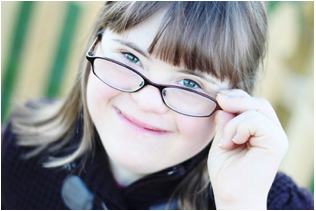TSI: Focused Attention: An Efficacy Study for Adults
Problems with auditory figure-ground processing—understanding speech in background noise—is a common complaint of adults. The problem appears to increase as we age. As part of its TSI-Targeted Sound Intervention®, NACD created the TSI: Focused Attention program in 2009 to help address figure-ground problems in children. An initial field study (TSI – Focused Attention Field Study Report) and an analysis of our initial data as our clients used the program (TSI Report of Data) supported the program’s effectiveness in increasing attention and focus in children, especially as it relates to the auditory environment and being in the presence of distracting sounds.
The current study was intended to look at the effectiveness of using TSI: Focused Attention with adults whose main complaint was difficulty hearing and understanding when there is background noise.
Method
Fifteen participants completed the study. NACD client families were contacted about the study, so participants were either parents or grandparents of children involved with NACD. Criteria for inclusion into the study included:
- Age 40 or older
- Complaint of figure-ground processing problems, with or without a documented hearing loss
Figure-ground processing problems were explained to potential candidates as concerns related to processing, hearing or listening when there is background noise.
Participants were provided with a TSI: Focused Attention program and headphones. They were instructed to listen twice per day, 5 days/week, for a total of 24 weeks. Pre- and post-testing included a speech-in-noise test and rating scales.
Participants were divided into two groups:
- Hearing loss—either documented or suspected but never tested (N=9)
- No hearing loss (N=6)
Regardless of grouping, all participants used the program the same way and received the same instruction and testing. The speech-in-noise test administered was an informal assessment created by NACD. It consisted of a CD of 20 words spoken in quiet (to serve as a comparison), randomly alternated with 20 words spoken in noise. Listeners were asked to repeat each word they heard. In addition, participants were asked to rate eight listening/processing skills 0-10, with 0 meaning they had no difficulty with that task and 10 meaning they had the greatest difficulty. Skills on the rating scale are listed in Table 1.
Results
Results are reported in Tables 2 and 3 and are reported separately for the Hearing Loss group and No Hearing Loss group. Results are shown as percentages correct for the speech-in-noise test. For the rating scales, results are shown as the mean score for each question.
|
Table 2: Speech-in-Noise (vs. No Noise) Test |
|||||
|
No Hearing Loss |
Hearing Loss |
||||
|
Pre |
Post |
Pre |
Post |
||
| No Background Noise |
88.35% |
97.50% |
87.20% |
88.90% |
|
| With Noise |
45.00% |
60.84% |
47.20% |
48.34% |
|
|
Table 3: Functional Rating Questionnaire Results |
|||||
|
No Hearing Loss |
Hearing Loss |
||||
|
Question |
Pre |
Post |
Pre |
Post |
|
|
1 |
6.00 |
4.50 |
4.83 |
5.12 |
|
|
2 |
4.58 |
3.75 |
4.11 |
3.50 |
|
|
3 |
5.25 |
5.00 |
6.67 |
5.72 |
|
|
4 |
5.08 |
6.00 |
5.49 |
3.33 |
|
|
5 |
4.50 |
4.17 |
5.95 |
4.51 |
|
|
6 |
4.25 |
6.17 |
5.78 |
5.22 |
|
|
7 |
5.00 |
5.50 |
4.83 |
3.38 |
|
|
8 |
4.75 |
5.83 |
3.38 |
1.83 |
|
On the speech-in-noise test, percentage of accuracy increased after the program, although the increase was much greater for the No Hearing Loss group than the Hearing Loss group. On the functional rating questionnaire, most ratings by the listeners in the Hearing Loss group decreased after the program, indicating a perceived improvement in function. For the few questions that showed a higher post-rating (implying worse function), some possible factors can be found in the Discussion section.
As part of the post-program interview, participants were asked about if they felt they benefited from the program, their enjoyment of the program, and whether they’d recommend it to someone else. Results are reported in Table 4.
|
Table 4: Post-Test Interview Questions |
||
| Question |
yes |
no |
| 1) Do you feel you benefited from doing TSI: Focused Attention? |
13 of 14 respondents |
1 of 14 respondents |
| 2) Did you enjoy doing the program? |
13 of 13 respondents |
|
| 3) Would you recommend the program to other adults who have similar concerns? |
12 of 13 respondents |
1 of 13 respondents |
Discussion
Results suggest that the normal hearing adults who experience difficulty with figure-ground processing may benefit from auditory training using TSI: Focused Attention. Adults who have issues with figure-ground processing due to hearing loss may be less likely candidates for the program.
One factor that the scores of the speech-in-noise noise test do not reflect is the accuracy—or, more aptly, the degree of inaccuracy—of incorrect responses. In many cases, some responses on the post-test were incorrect, yet closer to the correct answer than they were on the pre-test. If scores could reflect improvement in the accuracy of incorrect responses, the results would have reflected more change than they did only looking at correct vs. incorrect.
Although the numerical values in the tables in the Results section are interesting, perhaps even more significant are the comments made by the listeners about their perception of functional change with use of the program (see Appendix 1). Even listeners with hearing loss commented on how they felt their listening skills had improved. So test scores should be interpreted with caution, as the scores on the tests could be influenced by a number of factors. Some participants admitted that on the functional rating questionnaire they may have been thinking about the questions differently on the post-test compared to the pre-test. Others felt certain that for both the speech-in-noise test and the post functional questionnaire, they were more aware of their own skills and efforts and may have tried harder. A complete list of quotes and comments can be found in Appendix 1.
Besides the scores and listeners’ comments about change, other outcomes were also worth mentioning. Two of the participants reported that family members wanted to do the program because of the change they noticed in the listener. In addition, because of their positive experience with TSI: Focused Attention, 14 of the 15 participants wanted to go on to participate in the second research study, which looked at the effectiveness of TSI: FA2 for adults, a language-based figure-ground program. The one participant who declined participation in the second study said she only did so due to the logistics of her current schedule. Additionally, 100% of participants who responded to the question said they enjoyed doing the program; most felt they benefited from doing it; and most would recommend it to someone else.
Conclusion
It is often the case that efficacy studies such as this raise more questions than they answer. For this reason, almost all “conclusion” sections include the statement, “More research is needed…” And we concur with that thought, especially in light of the small number tested in the current trial. At the same time, understanding the limitations of the current study, we suggest that the results imply that TSI: Focused Attention can benefit adults who experience difficulties with auditory figure-ground processing, and that adults with normal hearing are better candidates for the program than those with hearing loss.
Appendix 1
54 y.o. male with hearing loss: “[It] helped me concentrate on what I was listening to, even though it didn’t help my hearing. I learned to focus, although my hearing problem still seems to be getting worse.”
52 y.o. female: “…I feel like I’m better able to focus.”
71 y.o. female: “As to whether or not it will help in everyday life, I’m not sure yet. But I definitely felt it was worth doing.”
61 y.o. female with hearing loss: “I get nervous going places with friends where I think there will be background nose. The last time I went, it was better than I thought it would be [post-program].” “[The program] helped me work harder at paying attention in conversations.”
41 y.o. female with suspected hearing loss: She reported that after the program she no longer became agitated and frustrated when all of her kids were talking. “It’s been great! My husband wants to do it.”
41 y.o. female who had some rating scores increase on the post-test: “It’s not worse; I’m just paying attention to it more.”
42 y.o. female: In regard to ratings that increased, she felt it was due to being more tuned in and aware of what she’s hearing and what she’s missing. Other comments: “I can turn the volume on things down now.” “I have my kids repeat less.” “I’m still distracted by other people’s conversations, but it’s a little better.”
42 y.o. female: “[After the program] I find it easier to listen in public when someone’s talking to me and there’s others around. I think I’m more focused on who I’m with.”
63 y.o. male with hearing loss: In regard to a functional skill he rated as higher (i.e. worse) after the program: “I don’t think I’m actually any worse than before. I may be doing better; I may be more aware now.”
68 y.o. female: Reported she was able to concentrate better and had less frustration with background sounds after the program. “My focusing has improved.”
64 y.o. female with hearing loss: “[My] awareness has changed. I’m more aware of what I’m missing now.”
Reprinted from the Journal of The NACD Foundation (formerly The National Academy for Child Development)



